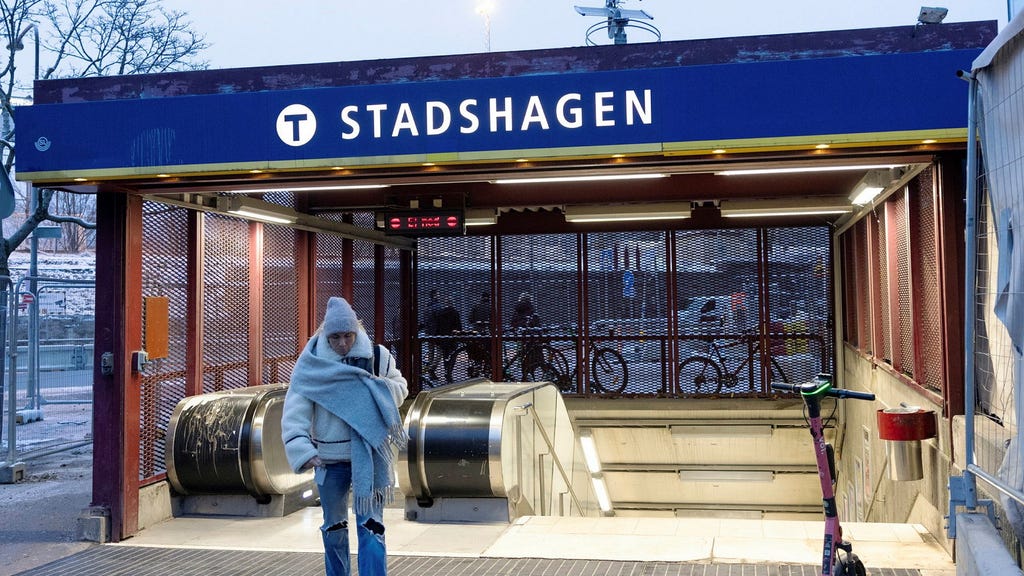Paragraph 1: Inside SL’s Security Nerve Center
Kristoffer Tamsons, regional council opposition leader, barely contains his enthusiasm as he enters SL’s (Stockholm Public Transport) highly secretive security control center. This technologically advanced hub, buzzing with countless monitors, is the heart of SL’s safety operations. Operative Rebecca Glimster demonstrates the system’s capabilities by showcasing a live intervention on a bus. Six strategically placed cameras provide a detailed view of the incident, allowing security personnel to monitor and respond effectively. This real-time monitoring, coupled with rapid response times, forms the backbone of SL’s impressive security framework, a system Tamsons hails as "the finest in public transport."
Paragraph 2: A City-Wide Security Vision
Tamsons and his colleague, city council opposition leader Christofer Fjellner, believe the effectiveness of SL’s security model should be extended beyond public transport. They envision integrating SL’s security center with the city’s existing systems, creating a unified platform for enhanced safety across Stockholm. Impressed by SL’s proactive approach, which they believe sets a national and international standard, Tamsons and Fjellner advocate for leveraging this existing infrastructure to benefit all Stockholmers. Their proposal aims to transform SL’s security center into a city-wide hub accessible through a single, unified emergency number.
Paragraph 3: From Transit Safety to Urban Security
The proposed integration aims to create a more efficient and cost-effective security system by streamlining operations and avoiding redundant infrastructure. Tamsons argues that rather than individual entities building their own separate security centers, it makes more sense to expand and adapt SL’s proven model. This unified approach, they believe, will provide better security for the same investment. Fjellner recounts his personal experience of feeling unsafe as a young newcomer to Stockholm using the metro system. He now experiences the opposite – feeling secure on public transport but uneasy in certain areas of the city, highlighting a stark contrast in perceived safety.
Paragraph 4: Addressing Concerns about Surveillance
Addressing potential concerns about an overreaching surveillance state, Tamsons asserts that the majority of Stockholmers are more worried about not receiving help when needed than about being monitored. Fjellner supports this view, emphasizing that most people using public transport are likely unaware of the surveillance and simply feel a sense of security, not intrusion. Their goal is to extend this feeling of safety beyond the transit system and into the wider urban environment. They contend that focusing on the benefits of increased security outweighs the potential drawbacks of enhanced surveillance.
Paragraph 5: Navigating Regulatory Hurdles
Recognizing that integrating the two security systems may require regulatory changes, Tamsons and Fjellner express their willingness to engage with the government to address any legal hurdles. They argue that if bureaucratic procedures hinder the implementation of enhanced security measures, then those procedures should be revised. They see the potential for increased safety and streamlined operations as justification for overcoming any regulatory obstacles that might arise. They suggest that the safety of Stockholm residents should take precedence over bureaucratic complexities.
Paragraph 6: Expanding on the Vision of Safety
The vision presented by Tamsons and Fjellner hinges on the proven success of SL’s existing security infrastructure. With a network of approximately 25,000 surveillance cameras, including 5,000 in stations and 20,000 on vehicles, the system provides comprehensive coverage and rapid response times, often outperforming SOS Alarm. Thomas Bråstad, the operational leader of the security center, emphasizes the effectiveness of the existing system, asserting that it makes it nearly impossible to commit a crime on public transport and escape detection. The politicians seek to expand upon this robust framework, transforming it from a solely transit-focused system into a comprehensive city-wide security network capable of addressing the safety concerns of all Stockholmers, regardless of their location within the city.














